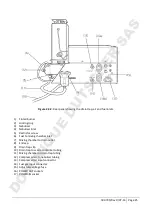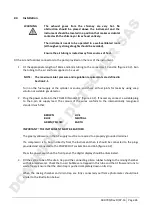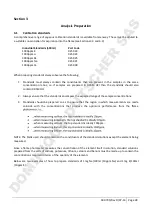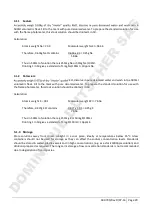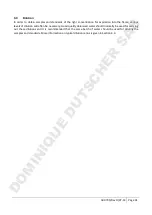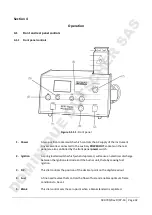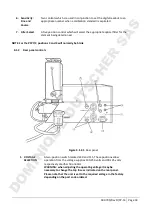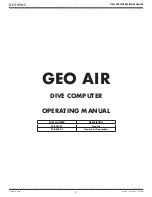
500 795/Rev D/07-14
Page 38
4.4
Calibration: PFP7/C
When using the PFP7/C, a calibration curve is not required as the display is calibrated in
concentration units. Therefore only one top standard is required to enable this calibration to
Installation and set-up procedures should be carried out as for the standard Model
NOTE: The Model PFP7/C allows direct readout of Na and K
in
serum samples. Na levels in urine samples may also be
directly from
the display.
Samples of both serum and urine should be diluted 1 in 100 or 1
200 to obtain optimum results from the flame
To calibrate the unit for clinical use the following steps should be carried
1. Aspirate deionised water and set the display to read
2. Select the appropriate element (Na or K) on the
filter select
control and the position
the decimal point using the
d.p.
3. Aspirate the required standard, e.g. 140mmol/l Na, 5.0mmol/l K which has been
diluted at least 1 in 100 and set the display reading accordingly using the
fine
coarse
sensitivity
4. Adjust the
fuel
valve in a clockwise direction until a peak reading is obtained. Re-set
display reading accordingly for the standard being
NOTE: There is a time delay between adjusting the flow of fuel and
the
effect of the adjustment. A pause of a few seconds is
necessary
between making every fine
The optimum flame conditions are different for Na and K
retuning is necessary when switching between
5. Re-check the zero setting and adjust if
6. Aspirate the pre-diluted sample and note the
7. Calibration needs to be checked periodically by aspirating the blank and
solutions. Initially this check should be carried out after every 10 samples.
and increased confidence in the PFP7/C will enable you to best judge the frequency
this
4.5
1.
Aspirate deionised water for at least ten
2.
If the shutdown is short term i.e. the instrument is to be used again the same day/shift,
is
adequate to remove electrical power from the unit by depressing the
power
This
will safely extinguish the
DOMINIQUE DUTSCHER SAS


